Indigenous Flora & Fauna
There is 8 ha of virgin indigenous forest in two gullies on the site. The pasture extends to the edges of the relatively steep gully sides. The steep slopes would have made it too difficult to clear, replant in grass, and support stock. Fortunately, this constraint meant that the forest has never been cut.
There is a diverse range of flora, including Manuka (Leptospermum scoparium), Kanuka (Kunzea ericoides), Broadleaf (Grisselina australis), Tarata Lemonwood (Pittosporum euginoides) and Lancewood (Pseudopanex crassifolia). Some of the larger trees include Totara (Podocarpus totara), Rimu (Dacrydium cupressinum), and some substantial Kanuka specimens.
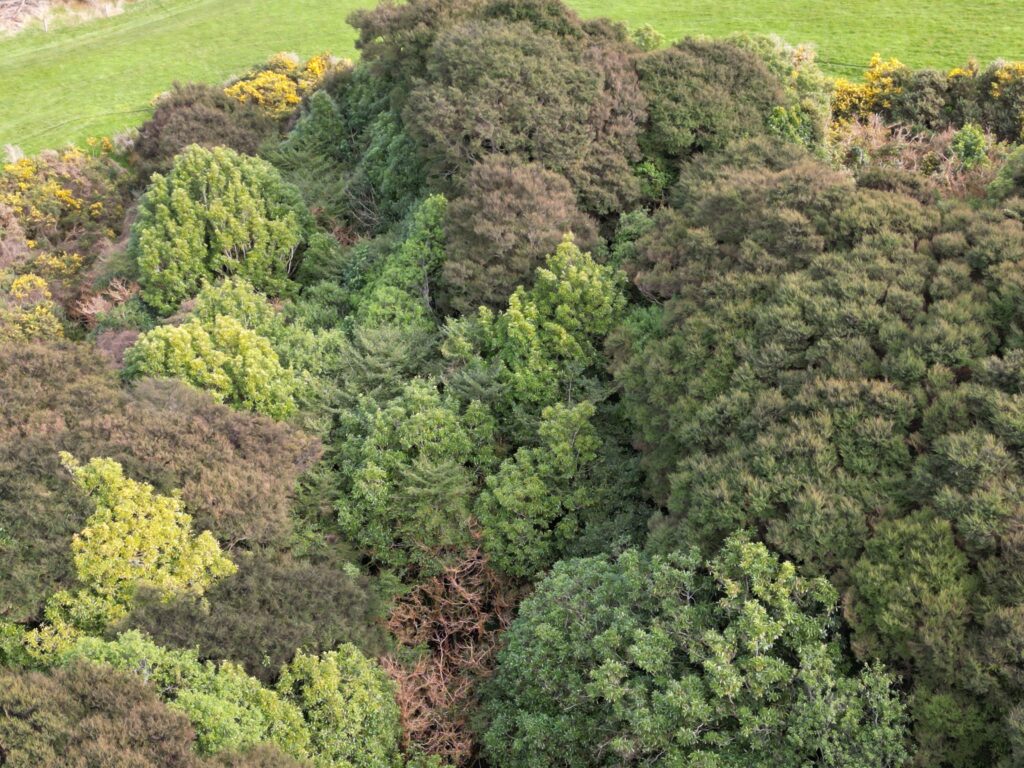
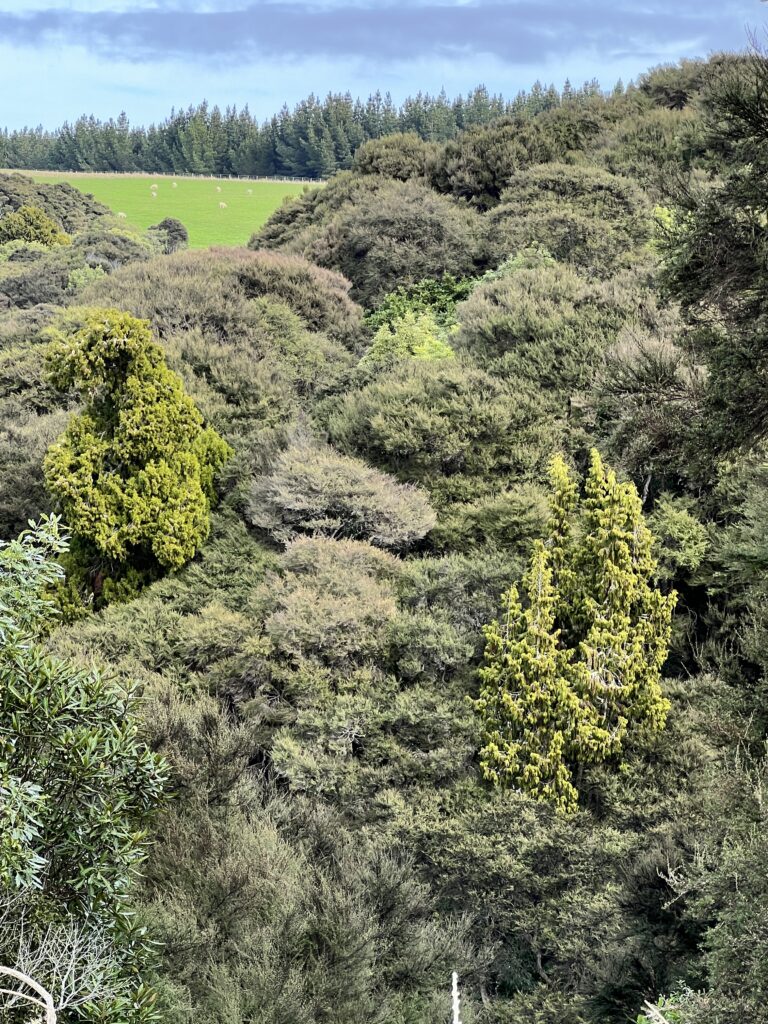
Under the canopy, there is substantial tree litter on the forest floor, providing nutrients for the Punga (Cyathea smithii), Piupiu (Lomaria discolor) and other ferns.
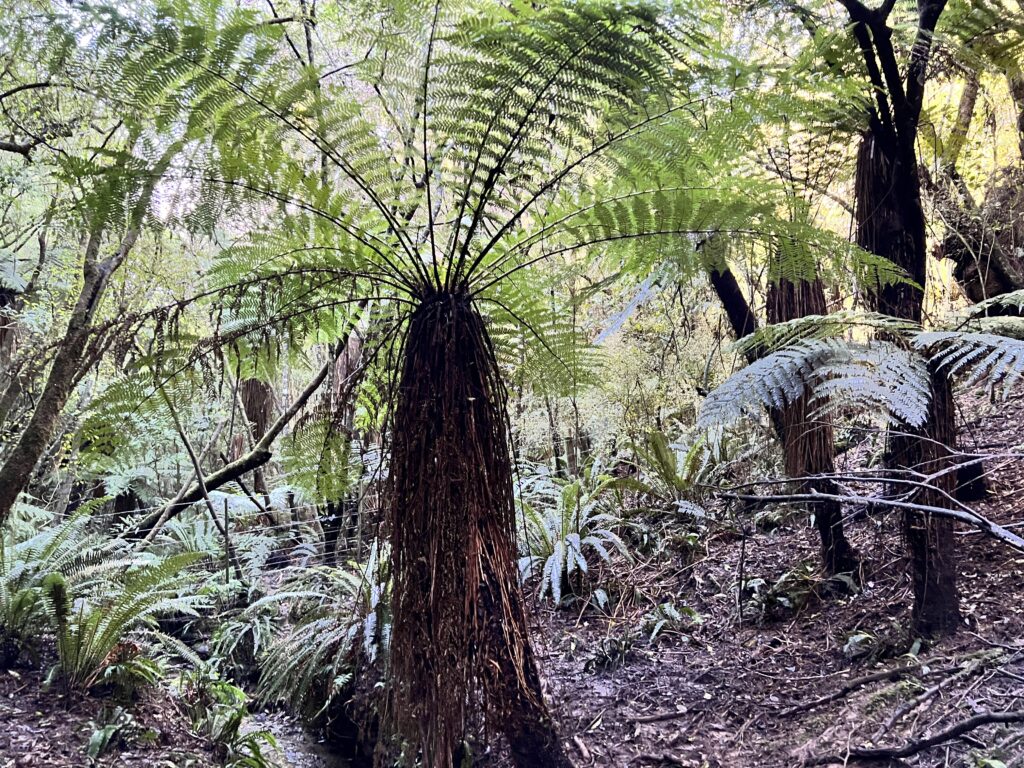
The ground is substantially bare, and this may be because the sheep have been cropping the young plants. This should change after the property is de-stocked.
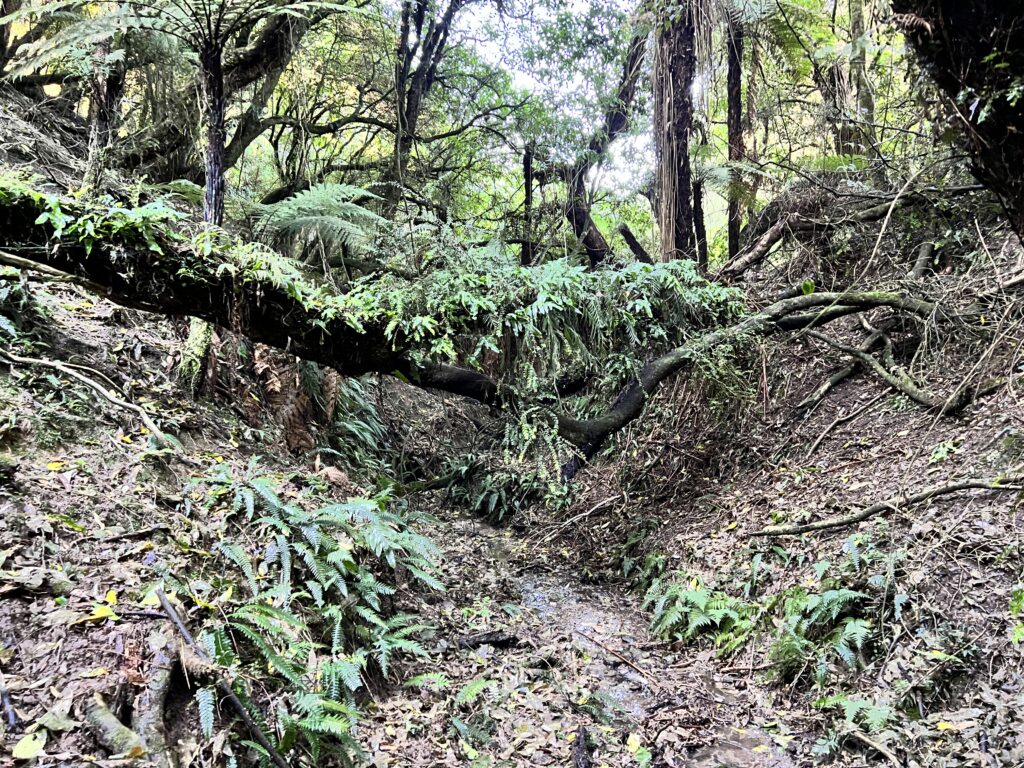
On the edge of the forest there is a stand of around 20 mature eucalyptus trees. My plan is to remove these exotics prior to planting more indigenous varieties.
The forest supports typical birdlife found in the area. As you walk through the forest, Fantails (Piwakawaka) follow you, hoping that you’ll disturb some insects for them to swoop on. Wood pigeon (Keruru), Tui, and Bellbirds (Korimako) can be heard and seen in the canopy.
A stream was running at the bottom of the gully during this winter visit. The stream had eroded the soil down to the bedrock. The uneven rock surface resulted in a small waterfall, as the stream ran down the gully.
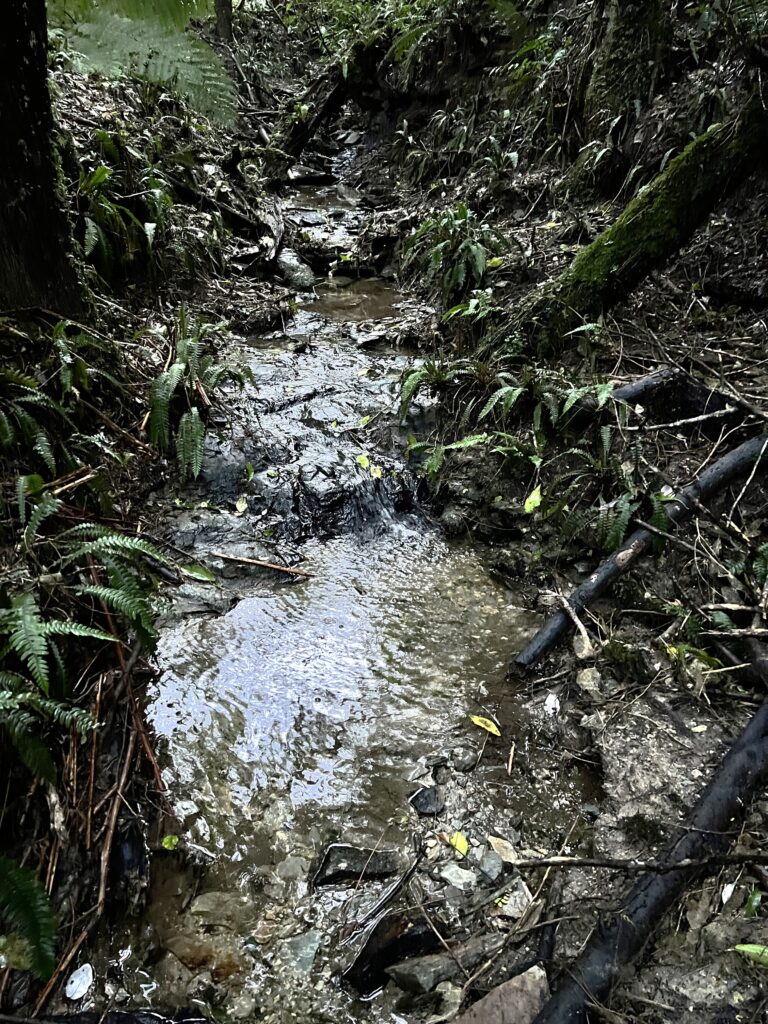
I only took still photos of the gully forest. A video is planned for the future. You can watch the KT002 slide show here or view all the videos on our YouTube channel.
3 September 2022

